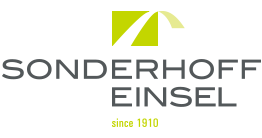The “related design system” in Japan
What is the “related design system”?
The “related design system” allows a respective registration of similar designs. It is useful to cover design variations with only a few applications.
Under the Japan Design Act, without using the “related design system”, a similar design will be rejected based on the prior similar designs even if an applicant is the same entity of prior similar designs.
How effective is this system?
It enables a clear scope of the respective design right. Clarifying the scope of a design right is in general difficult. However, the Japanese “related design system” helps to address this problem and makes such clarification easier and clearer.
Example:

(Design No. 1390415)
The above design has been registered for a ceiling lamp (partial design, i.e. the portions shown in dotted lines are excluded from the scope of protection).
Are the following designs similar to the above design?


The above-mentioned three designs have identically shaped lamp holes. However, depending on the number of these holes, the overall impression may be different, which might lead to the conclusion that the designs are actually dissimilar.
However, in Japan, there is the possibility to state similarity of the above mentioned designs by registering the following design as the related design with the above-mentioned seven holes design.

< Design No. 1412330 >
Doing so, the Design No. 1390415 will be considered as the principal design while the Design No. 1412330 will be considered as the related design. The JPO will consider these designs “similar” and will therefore accept a so-called “principal-related design” registration.
This kind of registration allows to state that in the present case, that the number of holes has no influence on the scope of the design right. If only the design no. 1390415 were registered, it would be uncertain whether or not the design with three holes or the like are similar to design no. 1390415. However, by using the “principle-related-design-system” the owner will be able to stop a third party from using designs with similar lamps, regardless of the number of holes.
How can we apply for related designs?
When filing the applications, one of the designs has to be designated as the principal design while one or more other designs have to be designated as the related design(s).
If the examiner considers pending designs to be similar to a prior design, he/she will issue an office action and invite the applicant to use the “principle-related-design-system”. If this happens, it is possible to designate one of the design as the principal design and the other(s) as the related design(s).
When can we use the related design system?
An application for a related design may be filed up to 10 years after the filing date of the principal design (or in case of a chain of related designs from the filing date of the earliest principal design). However, if the design right to be used as the principal design has already expired, the registration of a related design is no longer possible.
Are there any disadvantages of related designs?
Under the related design system, the related design has its own scope of protection as the principal design has. Therefore, in comparison to a “normal” design right, a related design right has no disadvantage concerning its scope of protection.
However, related designs have a few other disadvantages as follows:
- Related design(s) can be assigned only together with the principal design.
- It is not possible to grant separate licenses to the principal and the related design(s).
- The related designs right shall expire 25 years after the filing date of the “principal design”.

